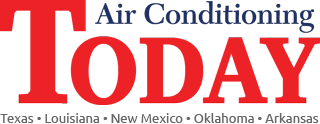
In a strong signal that the housing market is ready to lead a post-COVID economic recovery, builder confidence in the market for newly-built single-family homes jumped 14 points to 72 in July, according to the latest NAHB/Wells Fargo Housing Market Index (HMI) released today. The HMI now stands at the solid pre-pandemic reading in March before the outbreak affected much of the nation.
“Builders are seeing strong traffic and lots of interest in new construction as existing home inventory remains lean,” said NAHB Chairman Chuck Fowke. “Moreover, builders in the Northeast and the Midwest are benefiting from demand that was sidelined during lockdowns in the spring. Low interest rates are also fueling demand, and we expect housing to lead an overall economic recovery.”
“While the housing market is clearly rebounding, challenges exist,” said NAHB Chief Economist Robert Dietz. “Lumber prices are at a two-year high and builders are reporting rising costs for other building materials while lot and skilled labor availability issues persist. Nonetheless, the important story of the changing geography of housing demand is benefiting new construction. New home demand is improving in lower density markets, including small metro areas, rural markets and large metro exurbs, as people seek out larger homes and anticipate more flexibility for telework in the years ahead. Flight to the suburbs is real.”
Derived from a monthly survey that NAHB has been conducting for 30 years, the NAHB/Wells Fargo HMI gauges builder perceptions of current single-family home sales and sales expectations for the next six months as “good,” “fair” or “poor.” The survey also asks builders to rate traffic of prospective buyers as “high to very high,” “average” or “low to very low.” Scores for each component are then used to calculate a seasonally adjusted index where any number over 50 indicates that more builders view conditions as good than poor.
All the HMI indices posted gains in July. The HMI index gauging current sales conditions jumped 16 points to 79, the component measuring sales expectations in the next six months rose seven points to 75 and the measure charting traffic of prospective buyers posted a 15-point gain to 58.
Looking at the monthly average regional HMI scores, the Northeast surged 22 point to 70, the Midwest jumped 18 points to 68, the South increased 10 points to 73 and the West increased 14 points to 80.
HMI tables can be found at nahb.org/hmi. More information on housing statistics is also available at housingeconomics.com.


